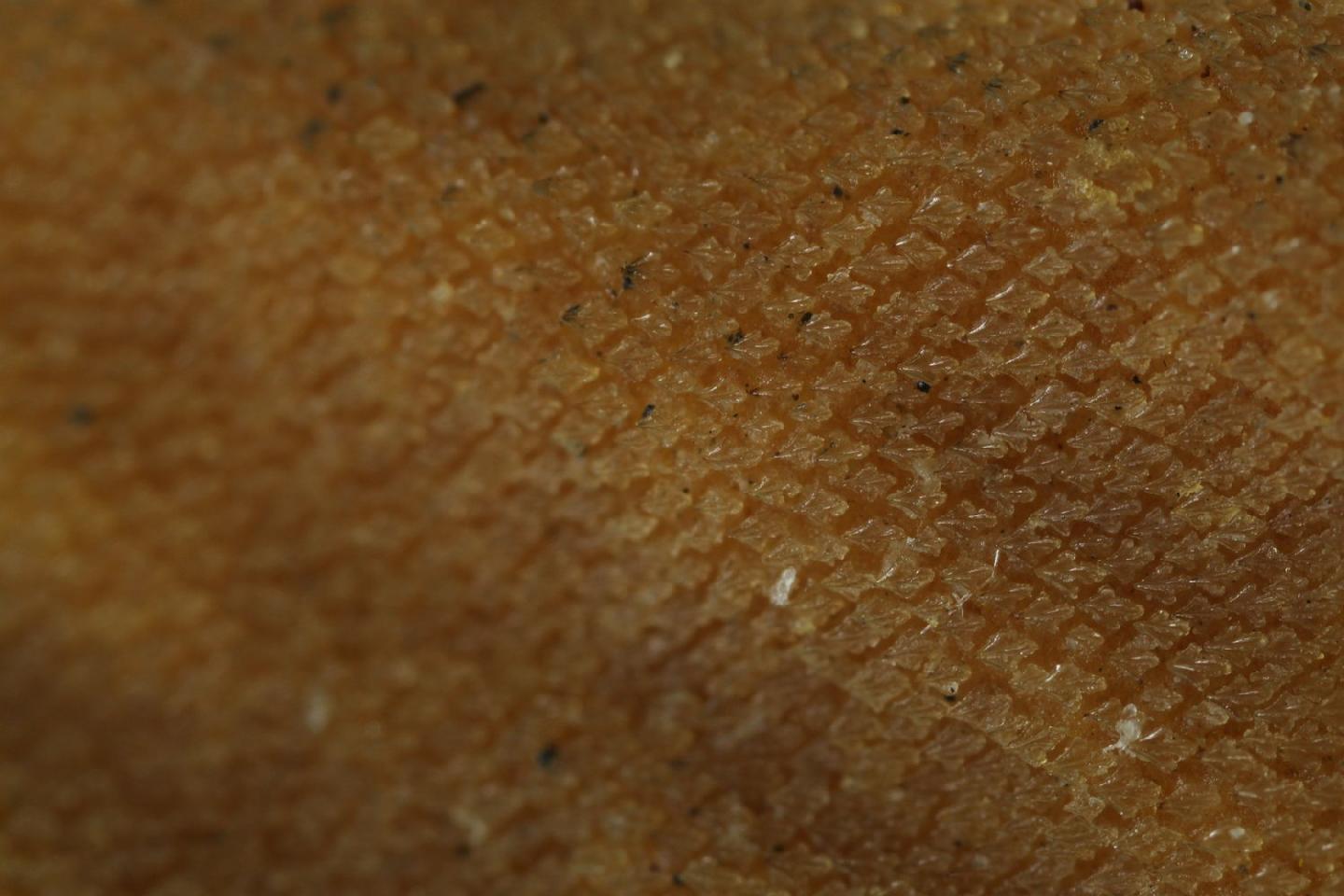WoRMS taxon details
Squalus megalops (MacLeay, 1881)
105925 (urn:lsid:marinespecies.org:taxname:105925)
accepted
Species
Acanthias megalops MacLeay, 1881 · unaccepted
Squalis megalops (MacLeay, 1881) · unaccepted (misspelling)
Squalus acutipinnis Regan, 1908 · unaccepted
Squalus probatovi Myagkov & Kondyurin, 1986 · unaccepted
marine, brackish, fresh, terrestrial
Not documented
Description Found on the outer continental shelves and upper slopes. Forms large schools. Feeds on bony fishes inlcuding lanternfishes,...
Description Found on the outer continental shelves and upper slopes. Forms large schools. Feeds on bony fishes inlcuding lanternfishes, star-eaters (@Astronesthes@), snake and conger eels, scorpion fishes, shrimps, cephalopods and other sharks. Ovoviviparous, with 2 to 4 young in a litter. Some sexual segregation occurs, on the east coast of South Africa, with breeding females staying more southerly in distribution. Utilized for human consumption. [details]
Froese, R. and D. Pauly. Editors. (2024). FishBase. Squalus megalops (MacLeay, 1881). Accessed through: World Register of Marine Species at: https://marinespecies.org/aphia.php?p=taxdetails&id=105925 on 2024-04-24
Date
action
by
![]() The webpage text is licensed under a Creative Commons Attribution-Noncommercial 4.0 License
The webpage text is licensed under a Creative Commons Attribution-Noncommercial 4.0 License
context source (Deepsea)
Intergovernmental Oceanographic Commission (IOC) of UNESCO. The Ocean Biogeographic Information System (OBIS), available online at http://www.iobis.org/ [details]
context source (HKRMS) ERM. (1998). Fisheries resources and fishing operations in Hong Kong waters. Final report. Submitted to Agriculture & Fisheries Department, The Hong Kong SAR Government. [details]
basis of record van der Land, J.; Costello, M.J.; Zavodnik, D.; Santos, R.S.; Porteiro, F.M.; Bailly, N.; Eschmeyer, W.N.; Froese, R. (2001). Pisces, <B><I>in</I></B>: Costello, M.J. <i>et al.</i> (Ed.) (2001). <i>European register of marine species: a check-list of the marine species in Europe and a bibliography of guides to their identification. Collection Patrimoines Naturels,</i> 50: pp. 357-374 (look up in IMIS) [details]
additional source Ben Rais Lasram, F.; Mouillot, D. (2008). Increasing southern invasion enhances congruence between endemic and exotic Mediterranean fish fauna. <em>Biological Invasions.</em> 11(3): 697-711., available online at https://doi.org/10.1007/s10530-008-9284-4 [details] Available for editors [request]
[request]
additional source Froese, R. & D. Pauly (Editors). (2023). FishBase. World Wide Web electronic publication. version (02/2023)., available online at https://www.fishbase.org [details]
context source (HKRMS) ERM. (1998). Fisheries resources and fishing operations in Hong Kong waters. Final report. Submitted to Agriculture & Fisheries Department, The Hong Kong SAR Government. [details]
basis of record van der Land, J.; Costello, M.J.; Zavodnik, D.; Santos, R.S.; Porteiro, F.M.; Bailly, N.; Eschmeyer, W.N.; Froese, R. (2001). Pisces, <B><I>in</I></B>: Costello, M.J. <i>et al.</i> (Ed.) (2001). <i>European register of marine species: a check-list of the marine species in Europe and a bibliography of guides to their identification. Collection Patrimoines Naturels,</i> 50: pp. 357-374 (look up in IMIS) [details]
additional source Ben Rais Lasram, F.; Mouillot, D. (2008). Increasing southern invasion enhances congruence between endemic and exotic Mediterranean fish fauna. <em>Biological Invasions.</em> 11(3): 697-711., available online at https://doi.org/10.1007/s10530-008-9284-4 [details] Available for editors
additional source Froese, R. & D. Pauly (Editors). (2023). FishBase. World Wide Web electronic publication. version (02/2023)., available online at https://www.fishbase.org [details]
 Present
Present  Present in aphia/obis/gbif/idigbio
Present in aphia/obis/gbif/idigbio  Inaccurate
Inaccurate  Introduced: alien
Introduced: alien  Containing type locality
Containing type locality
From other sources
Description Found on the outer continental shelves and upper slopes. Forms large schools. Feeds on bony fishes inlcuding lanternfishes, star-eaters (@Astronesthes@), snake and conger eels, scorpion fishes, shrimps, cephalopods and other sharks. Ovoviviparous, with 2 to 4 young in a litter. Some sexual segregation occurs, on the east coast of South Africa, with breeding females staying more southerly in distribution. Utilized for human consumption. [details]Habitat Known from seamounts and knolls [details]
| Language | Name | |
|---|---|---|
| English | shortnose spurdog | [details] |
| German | Kurznasen-Dornhai | [details] |
| Lithuanian | trumpasnukis dygliaryklis | [details] |
| Turkish | köpekbalığı | [details] |
| Ukrainian | Акула колюча коротконоса | [details] |
To Barcode of Life (53 barcodes)
To Biodiversity Heritage Library (14 publications) (from synonym Acanthias megalops MacLeay, 1881)
To Biodiversity Heritage Library (22 publications)
To Biodiversity Heritage Library (9 publications) (from synonym Squalus acutipinnis Regan, 1908)
To European Nucleotide Archive (ENA)
To FAO Species fact sheets
To FishBase
To FishBase (from synonym Squalus acutipinnis Regan, 1908)
To FishBase (from synonym Squalus probatovi Myagkov & Kondyurin, 1986)
To FishBase (from synonym Acanthias megalops MacLeay, 1881)
To FishBase (from synonym Squalis megalops (MacLeay, 1881))
To FishBase images (Squalus megalops, by Gloerfelt-Tarp, T.)
To GenBank (24 nucleotides; 23 proteins)
To GenBank (24 nucleotides; 23 proteins) (from synonym Acanthias megalops MacLeay, 1881)
To GenBank (4 nucleotides; 4 proteins) (from synonym Squalus acutipinnis Regan, 1908)
To Global Biotic Interactions (GloBI)
To IUCN Red List (Least Concern)
To IUCN Red List (Near Threatened) (from synonym Squalus acutipinnis Regan, 1908)
To NHMUK collection (Squalus acutipinnis Regan, 1908; SYNTYPE; NHMUK:ecatalogue:3127154) (from synonym Squalus acutipinnis Regan, 1908)
To NMNH Extant Collection (Squalus megalops RAD100075-001)
To NMNH Extant Collection (Squalus megalops RAD100075-001)
To PESI
To ITIS
To Biodiversity Heritage Library (14 publications) (from synonym Acanthias megalops MacLeay, 1881)
To Biodiversity Heritage Library (22 publications)
To Biodiversity Heritage Library (9 publications) (from synonym Squalus acutipinnis Regan, 1908)
To European Nucleotide Archive (ENA)
To FAO Species fact sheets
To FishBase
To FishBase (from synonym Squalus acutipinnis Regan, 1908)
To FishBase (from synonym Squalus probatovi Myagkov & Kondyurin, 1986)
To FishBase (from synonym Acanthias megalops MacLeay, 1881)
To FishBase (from synonym Squalis megalops (MacLeay, 1881))
To FishBase images (Squalus megalops, by Gloerfelt-Tarp, T.)
To GenBank (24 nucleotides; 23 proteins)
To GenBank (24 nucleotides; 23 proteins) (from synonym Acanthias megalops MacLeay, 1881)
To GenBank (4 nucleotides; 4 proteins) (from synonym Squalus acutipinnis Regan, 1908)
To Global Biotic Interactions (GloBI)
To IUCN Red List (Least Concern)
To IUCN Red List (Near Threatened) (from synonym Squalus acutipinnis Regan, 1908)
To NHMUK collection (Squalus acutipinnis Regan, 1908; SYNTYPE; NHMUK:ecatalogue:3127154) (from synonym Squalus acutipinnis Regan, 1908)
To NMNH Extant Collection (Squalus megalops RAD100075-001)
To NMNH Extant Collection (Squalus megalops RAD100075-001)
To PESI
To ITIS


